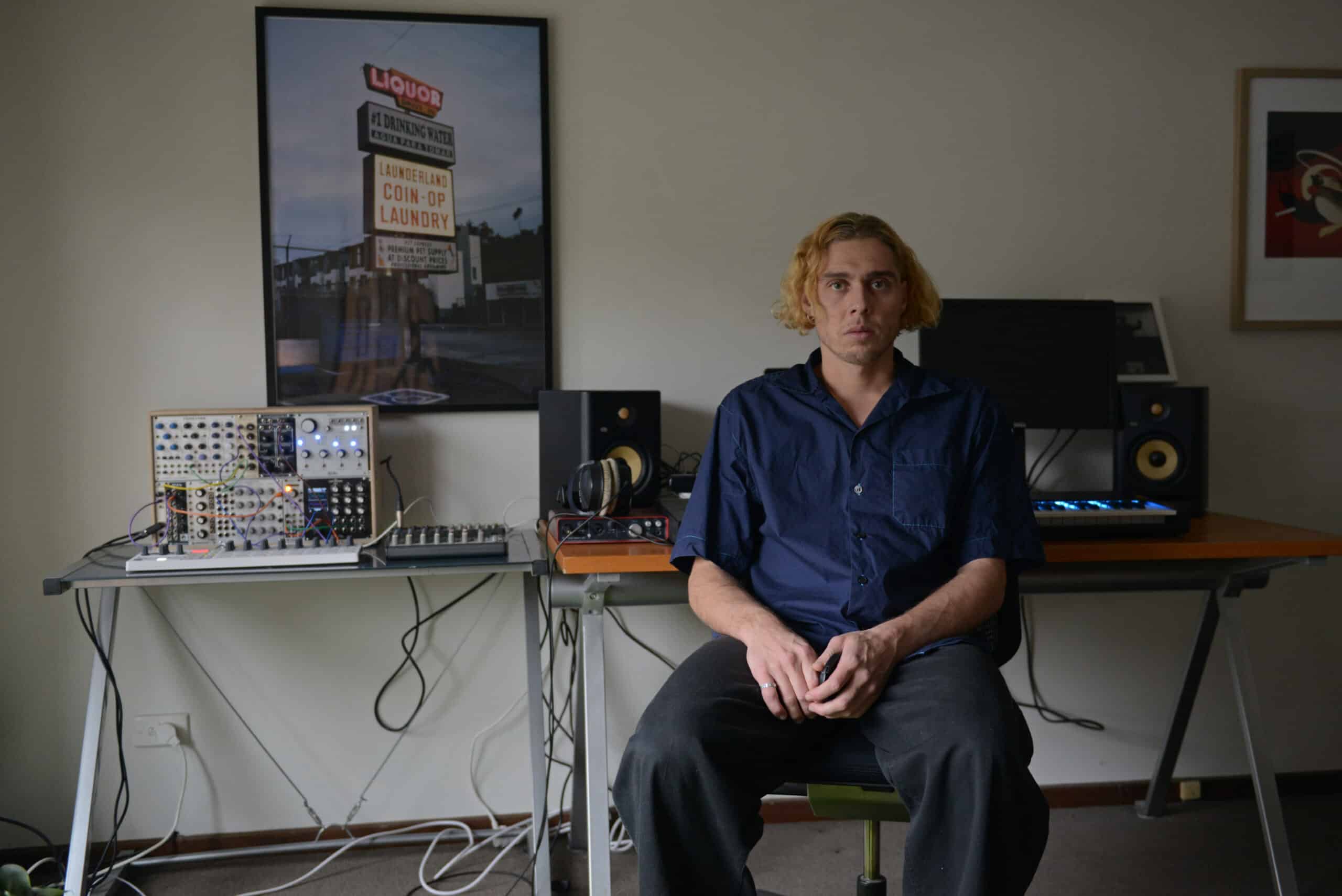Thom Pringle is a Naarm/Melbourne-based sound designer and artist whose creative journey over the past decade has been defined by growth, exploration, and a unique approach to the art of sound. With a versatile portfolio that spans commercial advertising, documentary filmmaking, and experimental sound design, Thom has established himself as a distinctive voice in the sonic landscape.
Originally from Queensland, Australia, Thom’s early years were deeply influenced by Brisbane’s dynamic DIY music scene. Immersed in a mix of punk, noise, indie rock, political folk, and experimental sound, he cultivated a deep appreciation for the power and potential of sound.
Thom’s path to sound design for film was shaped by his years of exploration with synthesizers, computer-based sound manipulation, and field recording, alongside various roles in the film industry. His work seamlessly blends technical skill with creative artistry, resulting in captivating sonic narratives that push boundaries while serving the story.
Today, Thom continues to thrive in the commercial film world, skillfully balancing his professional projects with artistic ventures that reflect his passion for sound and storytelling.
We can’t thank Thom enough for sharing his invaluable insights and experiences with our audience.
IMAGE: THOM PRINGLE
Your work spans everything from skate edits to high-profile commercial campaigns. What’s your process for tailoring sound design to such diverse projects?
Working on a wide variety of projects can be challenging, but I approach each one with the same mindset: understanding the goals, expectations, and brief, while striving to add something unique or unexpected.
The variety keeps things exciting—whether it’s a hyper-clean Ford car campaign requiring precise on-set sound tweaks, the gritty and raw feel of INVINCIBL3 by Riley Blakeway, or a highly dramatized, intense piece, each project presents its own unique challenges.
I’ve always been fascinated by the range of sounds—from music and nature to electromagnetic recordings and purely digital creations with synthesizers. Growing up, I was exposed to various music genres and live performances, which deeply shaped my appreciation for sound. That foundation, combined with inspiration from advertising, documentaries, and fiction films, allows me to adapt my approach to each project.
Ultimately, I keep an open mind and strive to do my best, regardless of the style or scope. There’s always something special to focus on, and that passion drives me to create meaningful work.
With a portfolio that includes both artistic experimentation and commercial advertising, how do you balance creative expression with meeting client expectations?
Balancing creative expression with client expectations starts with asking the right questions early in the process. Engaging with the creative team at the outset helps determine how far they’re willing to push boundaries and how much experimentation they’re open to.
When working with larger agencies, reviewing their past work offers valuable insights into their preferences and typical styles. On the other hand, collaborating directly with directors is often more streamlined. Directors usually have a clear vision, having spent considerable time in pre-production and on set with the client and agency, so they understand where the project needs to land.
Ultimately, it comes down to understanding the people involved—their tastes, preferences, and goals. By building this understanding, I can align creative objectives while delivering something that feels fresh and innovative.
Many of your projects involve storytelling through sound. Can you share an example of a project where sound design played a pivotal role in the narrative?
A great example is the Sephora Fragrance campaigns, where sound design plays a key role in conveying the essence of each fragrance. The sound effects are layered with ASMR elements to evoke sensory emotions, creating a tactile, immersive experience for the audience.
Some sounds are more literal, aligning closely with the visuals, while others are abstract and conceptual, setting the right emotional tone. For instance, the sound design captures the warmth, coolness, and seasonal elements associated with each fragrance, such as the freshness of spring or the depth of winter.
The goal is to create a sensory journey where the sound feels almost tangible, enhancing the narrative and drawing the audience deeper into the essence of the product.
Transitioning from skate edits to big-brand campaigns is a significant leap. What skills or approaches helped you make that transition successfully?
Transitioning from skate or action projects to big-brand campaigns required a deeper understanding of the director’s and creative team’s vision. While I always strive to honor their ideas, I also aim to bring my own unique perspective—something creative or slightly offbeat—without veering too far from the brief.
For example, in the Gap-Troye Sivan campaign, the focus was on maintaining a clean and minimal soundscape. In such cases, it’s about striking a balance: adding subtle sonic elements to create interest while ensuring the voiceover remains the centerpiece.
Adapting to larger campaigns also meant fine-tuning my ability to collaborate effectively with bigger teams and adjusting my approach to meet the demands of high-profile projects.
What’s a recent commercial project that pushed your creative boundaries, and how did you approach its challenges?
A recent project that challenged me creatively was INVINCIBL3, a short film where sound design inspired the narrative. The director and I decided to start with sound design before writing the script, allowing the auditory elements to shape the story’s direction.
After shooting the film and assembling the edit, we revisited the sound to add new sections and layers, further enhancing the emotional depth. With no dialogue in the film, sound became the primary tool for conveying tone, emotion, and pacing, creating a compelling story through auditory cues.
This unconventional approach pushed me to think outside traditional workflows and highlighted the power of sound as a storytelling medium.
Thank you for your time!
Thank you for having me!
If you are interested in even more entertainment-related articles and information from us here at Bit Rebels, then we have a lot to choose from.

COMMENTS